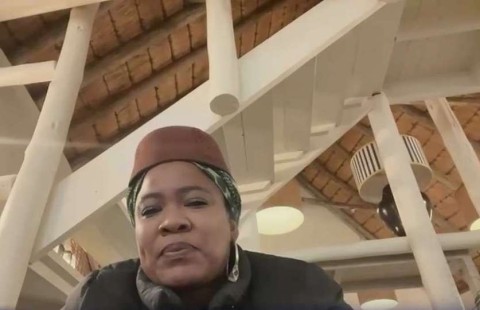In a world where popular destinations often steal the spotlight, there exists a quiet charm in the places few travellers go. The least-visited countries may not dominate Instagram feeds or guidebook covers, but they hold treasures just as rich, untouched landscapes, vibrant traditions, and the rare promise of solitude. These under-the-radar gems invite the curious and the adventurous to experience a different kind of travel, one that rewards depth over crowds.
From the volcanic isles of the Pacific to remote deserts in Africa, these ten countries offer more than just low tourist traffic; they provide a sense of discovery that’s becoming increasingly rare in modern travel. Whether it’s Nauru’s lonely coastline, Tuvalu’s time-suspended charm, or Comoros’ scent of vanilla in the sea breeze, each place tells a story untouched by mass tourism. Visiting these nations isn’t just about seeing something new; it’s about seeing the world differently, embracing the beauty of quiet corners, and supporting cultures that are often overlooked yet deeply welcoming.
Let’s get into it:
With around 52,000 annual visitors, Guinea-Bissau is one of West Africa’s most overlooked countries. Infrastructure is limited, and political instability has been a challenge. Tourism facilities are basic, and the country doesn’t get much international promotion.
That said, it’s relatively stable now. The Bijagós Archipelago is a highlight—mangroves, hippos, and rare birds all in one place. Bissau, the capital, has colonial-era charm and an interesting local culture. This is a destination for explorers who don’t mind roughing it a bit for the sake of discovering something raw and real.
Comoros, off the east coast of Africa, gets about 45,000 visitors a year. It’s made up of volcanic islands and has struggled with political instability and a lack of infrastructure. In the past, frequent travel advisories kept many tourists away, although things have improved recently.
The country is generally safe if you take the usual precautions. You’ll find beautiful beaches, coral reefs, and Mount Karthala, an active volcano. The culture is a mix of African, Arab, and French influences, giving it a distinct flavour. If you’re looking for somewhere quiet and authentic, the Comoros could be your next adventure.
This two-island country off Africa’s west coast brings in about 35,000 tourists a year. Tucked away in the Gulf of Guinea, it’s not easy to reach, and that’s part of the charm. Portuguese is the official language, and English isn’t widely spoken, which can make travel a bit tricky.
São Tomé and Príncipe are politically stable and safe for visitors. You’ll find rainforests, waterfalls, cocoa plantations, and beautiful beaches. It’s perfect for ecotourism and birdwatching. São Tomé has old colonial buildings and markets, while Príncipe is a UNESCO Biosphere Reserve with incredible wildlife and scenery. It’s a nature lover’s dream.
Around 29,000 people visit the Solomon Islands each year. Located in Melanesia, this island group is remote and often overlooked. It’s not heavily promoted, and past political issues gave it a rough reputation, although things have been stable for years now.
Generally, it’s a safe place to travel, but keeping up with local news is always wise. It’s another paradise for divers, full of WWII wrecks and coral reefs. Culture here is strong and unfiltered. Infrastructure varies, so you’ll need to be flexible. But if you’re a nature lover or history fan, the Solomon Islands are incredibly rewarding.
This quiet Caribbean island sees just under 20,000 tourists annually. Back in the 1990s, a major volcanic eruption devastated much of Montserrat, including the capital, Plymouth. The southern part of the island remains off-limits, which has slowed tourism recovery.
But don’t let that scare you off. Today, Montserrat is considered safe, with active monitoring of the volcano. The north is lush and full of life, with black-sand beaches and scenic hiking routes. The people are friendly, and the culture is vibrant. Visiting here feels like uncovering a hidden part of the Caribbean’s past and present.
With about 18,000 annual visitors, Micronesia remains one of the world’s most under-the-radar destinations. Located in the western Pacific, it’s tricky to reach. Most flights route through Guam, Hawaii, or Manila. The country’s tourism infrastructure is modest, and luxury options are few and far between.
That said, Micronesia is very safe and rich in both culture and nature. It’s a diver’s dream, packed with coral reefs, underwater caves, and WWII wrecks. Yap is famous for its stone money and preserved customs, while Pohnpei has the ancient ruins of Nan Madol. It’s ideal for curious travellers who want a deep dive into local life and natural wonders.
Kiribati gets around 12,000 tourists a year. Spread across the central Pacific, this island nation stretches so far that it crosses both the equator and the international date line. Getting between islands is tough and costly. Infrastructure is very basic, and accommodation options are limited.
It’s safe for visitors but very rustic. Expect simple living and not much in the way of tourist services. But what you will get is deep cultural authenticity, WWII historical sites, and pristine marine environments. Perfect for travellers who enjoy sustainability, history, and going completely off the beaten path.
Niue welcomes just over 10,000 tourists a year. Often called The Rock of Polynesia, this tiny island is self-governing but linked with New Zealand, which helps with infrastructure and support. It’s small, remote, and only accessible via one weekly flight from Auckland.
Despite how hard it is to get to, Niue is one of the safest countries in the world. There’s no crime to speak of, and the people are incredibly friendly. You can snorkel, dive, or go whale watching during the right season. Caves, cliffs, coral reefs—it’s all there, just without the crowds. If you’re into eco-friendly travel and want something off-grid, Niue won’t disappoint.
Only about 6,100 people visit the Marshall Islands each year. Like Tuvalu, it’s deep in the Pacific and hard to get to. Flights are pricey and few, mainly connecting through Guam or Hawaii. The country also doesn’t have many hotels or a well-developed tourism scene, which keeps most travellers away.
Still, it’s very safe, with almost no crime. What makes it worth the trip? Incredible diving, especially around sunken WWII ships and planes. The capital, Majuro, is great for learning about local culture, and the outer islands are stunning and untouched. If you’re into diving or looking for a true escape, this might be your spot.
Tuvalu holds the title of the least-visited country in the world, with around 3,700 visitors each year. Tucked away in the Pacific Ocean, this tiny Polynesian country is made up of nine small islands. It’s incredibly remote, with no major international airport, and the only way in is through a few weekly flights from Fiji. Between its limited infrastructure, lack of tourism marketing, and vulnerability to rising sea levels, it’s not exactly on most people’s radar.
That said, Tuvalu is a peaceful and safe place to explore. If you’re the type who appreciates quiet, untouched beauty, you’ll love it here. Expect a laid-back island vibe, welcoming locals, and gorgeous coral atolls. The main island, Funafuti, has a few guesthouses and offers fantastic snorkelling within the Funafuti Marine Conservation Area. It’s a rare chance to experience a traditional, slow-paced island lifestyle.
comments









